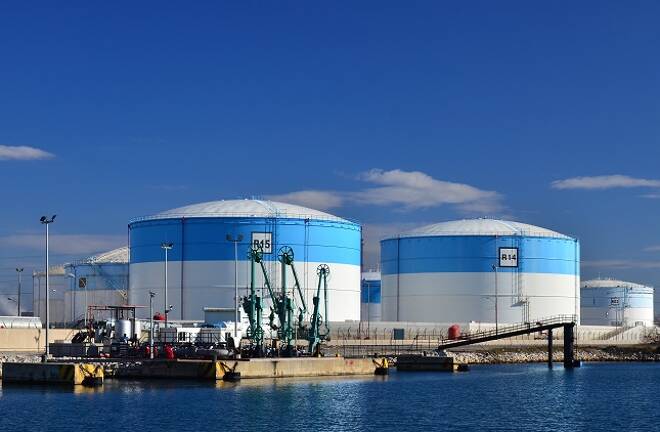Advertisement
Advertisement
Oil Price Fundamental Daily Forecast – OPEC+ Decision Put in the Bottom; Easing Omicron Fears Lifting Prices
By:
The CDC first designated Omicron as a Variant of Concern on December 1, but crude oil bottomed on December 2 when OPEC+ made its output decision.
U.S. West Texas Intermediate and international-benchmark Brent crude oil futures closed higher on Thursday after changing the main trend to up for the first time since November 17. The markets have also recovered 61.8% of their breaks from October 26 to December 2.
Additionally, both U.S. West Texas Intermediate and Brent crude oil are trading well above their November 30 closes at $65.49 and $68.88, respectively. This is important because the U.S. Center for Disease Control (CDC) first designated Omicron as a Variant of Concern on December 1.
On Thursday, March WTI crude oil futures settled at $73.42, up $1.09 or +1.51% and March Brent crude oil finished at $76.64, up $1.36 or +1.77%. Additionally, the United States Oil Fund ETF settled at $53.13, up $0.65 or 1.24%.
Both U.S. West Texas Intermediate and Brent crude oil have been trading above their November 30 closes since posting dramatic closing price reversals on December 2. This tells me that traders haven’t been too concerned about the impact of Omicron on crude oil demand for over three weeks, despite what the headline writers have been saying.
Well, maybe just enough to keep a lid on prices, but not enough to trigger the start of a bear market. Both WTI and Brent haven’t been lower since December 2.
OPEC+ Decision Shifted Momentum to Upside, Not Easing of Omicron Fears
So what happened on December 2 to turn crude oil prices higher? OPEC+ agreed to go ahead with oil output increase. It didn’t cave into U.S. pressure to accelerate daily production, it stuck with its plans for a 400,000 barrel per day rise.
Fearing another supply glut, sources said the Organization of the Petroleum Exporting Countries, Russia and allies, known as OPEC+, considered a range of options in talks on December 2, including pausing their January hike of 400,000 barrels per day (bpd) or increasing output by less than the monthly plan, according to Reuters.
But any such move would have put OPEC+, which includes Saudi Arabia and other U.S. allies in the Gulf, on a collision course with Washington. Instead, the group rolled over its existing deal to increase output in January by 400,000 bpd.
Short-Term Outlook
Look at the headlines then match them up to the daily chart and you’ll see that crude oil bottomed on December 2 following the OPEC+ decision to raise production. Omicron may have been an issue throughout the month, but only to the extent that it would cap prices until traders could figure out its impact on demand.
The virus is spreading globally, but traders have concluded it is transitory and will have a limited impact on demand. This appears to be the catalyst putting the markets in a position to breakout to the upside over the short-run.
For a look at all of today’s economic events, check out our economic calendar.
About the Author
James Hyerczykauthor
James Hyerczyk is a U.S. based seasoned technical analyst and educator with over 40 years of experience in market analysis and trading, specializing in chart patterns and price movement. He is the author of two books on technical analysis and has a background in both futures and stock markets.
Advertisement
